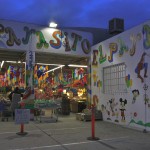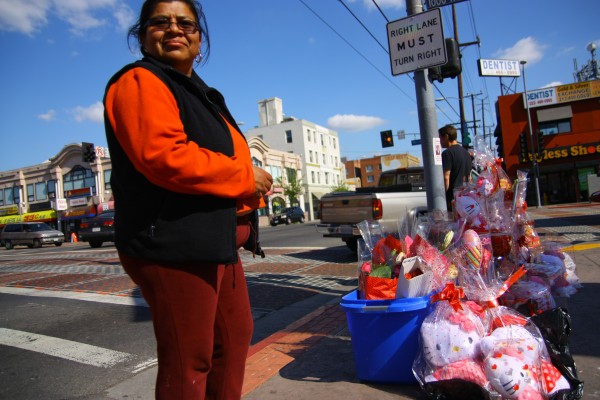I love my job. Yesterday I was talking with Brenda Gonzalez, a transgender woman from the state of Michoacan, who works in Hollywood. I’d gone to her nonprofit service agency because they host a meeting of Latina transgender women every Wednesday.
Anyway, we were talking more about the case of the transgender woman, Nathan Vickers (or Cassidy, or Chassidy), who was murdered in November and again the topic turned to how Latina immigrants, mostly from Mexico, had changed transgender culture.
As I’ve written here in an earlier post, Latinas dove into surgery in a big way. Part of it, Brenda told me, was due to the fact that they were illegal and had no work and street was all that was available and guys with large breasts, high cheeks, round buttocks made more money. It was also because many came looking for a transformation that was denied them in Mexico — much like other immigrants, from small, benighted villages.
“Part of the transition is transforming yourself emotionally, spiritually, and physically. You have to be beautiful, up to date, you have to look beautiful, sexy, voluptuous,” she told me.
But with so many girls in the same situation, all competing on the street, “part of the competition becomes obsession. You see some little Lupita on the corner with a new nose, then you want one. If she gets a nice bust, you want one, and now not just size 40, but 44dd.”
Plus, their world is very small, she said. “I live in East LA but I hear when someone in Hollywood gets an operation. If I live in Hollywood, I hear when someone Long Beach gets operated or someone in Van Nuys gets a sex change.” So that adds to the demand for surgery.
Most important are breast implants. Breasts being the most obvious sign of being female, implants are the transgender’s American Dream, Brenda said.
“Part of the transition and acceptance and feeling happy and content with ourselves, what makes us feel even more secure and more like women, is when we have breast augmentation. It’s why most of us have our breast surgery. Some view it from the sex market: There’s more demand for those who have them, and then you can then get more surgery and send money home to mom and dad. It’s a fundamental part of the transition that make you feel secure are implants, breast surgery that gives you a large and beautiful bust. It’s part of your own feeling of security. It’s essential.”
Man, you just don’t hear this kind of stuff that often.
Sorry no photos from the interview. So here (above) are a few when I lived with the girls in Mazatlan as they prepared for what was then the oldest gay beauty contest in Mexico (from my first book), including one who is getting her breasts injected with baby oil, which was the only method they could afford on the money they made hooking down in Mazatlan.


















